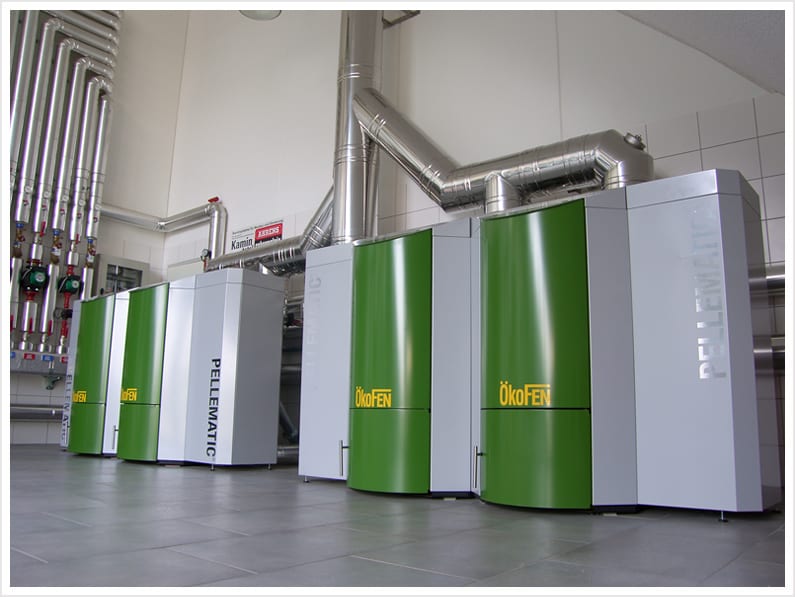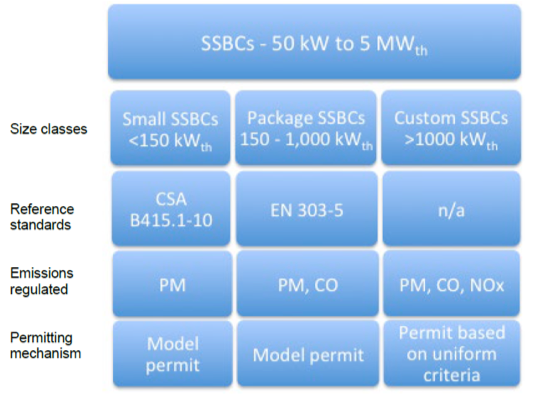
New guidance on managing air emissions from small solid biomass combustors highlights importance of wood biomass
March 9, 2022
By Fahimeh Yazdan Panah
 Photo courtesy Okofen
Photo courtesy Okofen The Canadian Council of Ministers of the Environment (CCME) has published new guidance on managing air emissions from small solid biomass combustors (SSBCs), which has been modelled on Ontario’s Guideline A-14 “Controlling air emissions from small wood-fired combustors” that was published in 2017.
The guideline uses a tiered approach for the management of air emissions, depending on the current status quo within each province and territory. There are currently vast differences amongst the Canadian provinces and territories with regards to the management of air emissions, so a “one size fits all” approach was not considered. Instead, provinces and territories with little to no air emission regulations can start off with Tier 1 whereas more sophisticated provinces and territories with existing air emission regulations can readily adopt the framework in either Tier 2 or 3.
This new national approach and the importance of the wood pellet sector is clearly recognized in the guideline. “Biomass or wood combustors are seeing a renaissance in Canada, partly for ecological reasons, partly due to the lower cost of woody biomass fuel. Biomass is considered a low-carbon fuel, reducing lifecycle greenhouse gas emissions when compared to fossil fuels. Biomass combustors also use a local rather than an imported resource, thereby stimulating local economic development,” the authors write, adding that the sector also faces a perception problem – “Despite all these advantages, however, biomass combustors are perceived as polluting, and as creating more local air emissions than most gas- or oil-fired heating devices.”
The new guidance is based on four principles:
- Minimize impact of air emissions from solid biomass on human health and the environment.
- Enable consistent Canada-wide use of cleaner small solid biomass combustion technology.
- Support the implementation of standards for solid biomass fuels and small solid biomass combustors.
- Enable reductions in GHG emissions.
The scope of this guidance manual covers the thermal heat energy (th) generated by biomass-fueled boilers and heaters larger than residential size (>50 kW/th) and smaller than industrial size (typically <5 MW/th). These SSBCs are typically used in the commercial, institutional, multi-unit residential and light industrial sectors as well as in agriculture. The focus is strictly on wood fuels that conform to the specifications listed in the CAN/CSA-ISO 17225 standard series (grades A and B) such as wood pellets, wood chips, wood briquettes and firewood. Agricultural and other biomass-derived fuels are not considered nor are electricity generating or combined heat and power (CHP) systems.
This guideline addresses the air emission options for three different sizes of SSBCs. SSBCs up to a thermal output capacity of 150 kW, between 150 kW and one MW, and those larger than one MW. Those with a nominal thermal output capacity of less than 150 kW are covered by CSA standard B415.1 or the European standard EN 303-5. The boilers up to 1 MW thermal output are well covered by European standard EN 303-5. Units above 1 MW are mostly custom-built boilers and no specific standard exists for these units.
The key approach to regulating emission from SSBCs is mandating that equipment be compliant with existing technical standards and that only fuel that meets vendor specifications and the specifications of Canadian wood fuel standards be burned. You can find the copy of the newly published guideline here.
This article is part of the Bioheat Week 2023. Read more articles about bioheat in Canada.
Print this page
